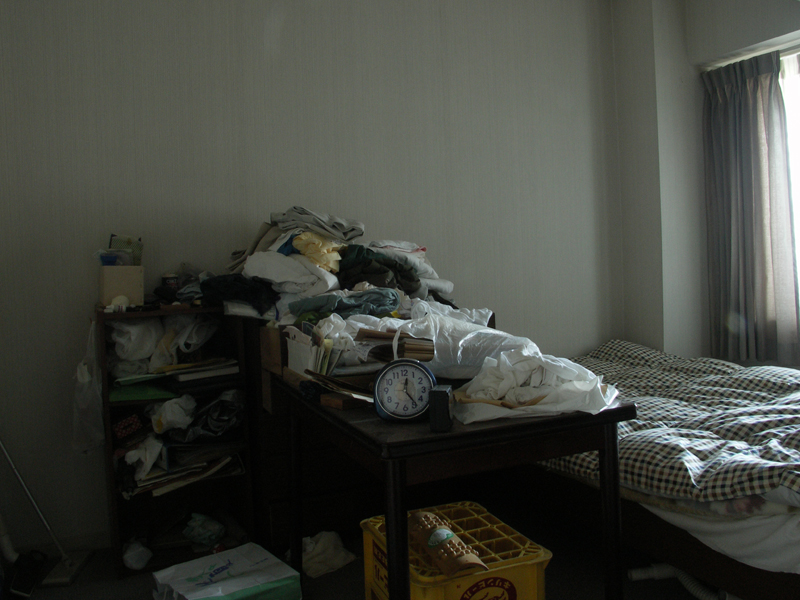March 29 – April 13 2014
Mettlework
50 Lor 17 Geylang Singapore 388570
http://mettlework.co/
Opening Party: Fri 28 March 19:00 –
Alasdair Duncan
Kyoko Ebata
James Howard
Miho Shimizu
Dennis Tan
>>more info
The show Anna is organized by a group of international artists based in Japan, Singapore and UK and is held at the studio of Dennis Tan based in Singapore.
Anna is about a hole and a fictional woman named Anna. The word “ana” means hole in Japanese. Throughout the show the artists will be showing the product of their neurotic mental journeys.
In connecting holes and Annas, perhaps the most famous Anna to come to mind is Anna O, a made up name for Bertha Pappenheim who’s treatment for hysteria, a form of neurosis, by Sigmund Freud’s colleague Joseph Breuer, and documented by Freud, is regarded as the starting point of psychoanalysis. The position of the hysteric can be understood as being characterised by a deep feeling that there is a hole that cannot be filled (with libidinal implications). The hysteric may tend to seek out knowledge to fill the hole, but since the hole cannot be filled the knowledge produced is inadequate to that task. Hysteria is an orientation that is typically but by no means exclusively taken by women, and what it is to be a woman, to take the feminine position, beyond biology, can be understood as a hole in what can be known.
“A mole is well adapted to holes. It feels no need to understand them.”
A hole is something that is not there, it can’t be seen in itself – it is constituted to our senses by the materials which circumscribe it. This kind of circumscribed inexperience that makes a hole might lend itself to a sentiment of the sublime – a relation of awe towards the unknowable as experienced through limits. It may evoke a sense of investigation or adventure. In an old Buddhist tradition monks used to go into a hole in the ground and stay there until they die in order to become a self-mummified living Buddha, there might be a sense of being close to the death and the sublime in the act of being in the hole.
Annaというタイトルでシンガポールでグループ展を企画。日本、シンガポール、イギリスからアーティストが参加。Annaは架空の女性の名前のアナ、日本語の穴を意味する。展示を通して、神経症的な心の旅をする。
穴とアナの関連性として、有名なアナとして思い浮かぶのは、神経症の一種であるヒステリー患者のベルタ・パッペンハイムの仮名の、アナ・Oである。アナはフロイトの同僚ヨゼフ、ブロイヤーの患者で、診療内容はフロイトによって記録され、これは精神分析学の始まりとも言われている。ヒステリーの特徴として本能的に心の中の穴を埋められないような気持ちが挙げられる。ヒステリーはこの穴を埋めるための知識を求めるが、その知識は不適当でしかない。
ヒステリーは典型的に女性的であるという言い方もあり、生物学的にも穴は女性のものであるといも言える。
モグラは穴にぴったりだから、穴のことなんて理解しなくても大丈夫。
穴とはそこに存在しないものであり、それ自体はみることができない。境界線をつくる素材いによって私達の感覚上に作られるのである。限界によって体験する不可知の存在に対する畏敬の念により、このような境界線は崇高の感情へと導かれるだろう。また、探求心や冒険心も刺激する。昔、仏僧が即身仏になるために地下の穴に入って絶命したように、穴に入ることは死や崇高に近づくような感覚があるのかもしれない。
Ebata has moved into an old house in Tokyo where her grand parents used to live. There is a hole in the garden but the purpose of the construction is unknown. When a gardener came to the garden, she asked him what was the purpose of the hole. He wasn’t sure the purpose but had a quick look of the hole. Ebata thought there was a dark perfect cuboid under the ground and wondered why since there should be roots of trees underground. She needed to check what it was inside.So when she met a painter who was a karate black belt holder at a dinner party, she thought he was strong enough to open the lid and asked him to help her out. The painter came to her house and opened the lid and they discussed what it the purpose of the hole. The process is documented in the video. There was the moment that he questioned what he was doing with a stranger. The meaning of the hole changes according to their interpretation and the shallow establishment of the trust with each other.The trust is based on a fictional story made in each other’s mind.
The Right Hole, 2014 Photography, Kyoko Ebata
Kyoko Ebata looks for holes in Singapore and Japan. Ebata finds and document holes, searching for the right hole, what constitutes the right hole is not at all clear, and she cannot find the right hole, only a series of holes which are not right, there may be many reasons that the hole is not right, although why they are wrong is not much more clear than the question of what the right hole might be. What is clear is that these holes are not the right ones. The piece will thus be a collection of photographic documentation of the wrong holes. Some of the holes have historical values, such as Bukit Brown (Chinese cemetery), a former Shinto shrine located at MacRitchie Reservoir in Singapore, as well as The Hundred Caves of Yoshimi and the cave dug by Korean people during the WWII in Japan. But they are all treated as parallel hole juxtaposed next to swede, dust shoot of HDB (housing council in Singapore), and holes of walls.




